Laxatives for Children: Are They Safe?
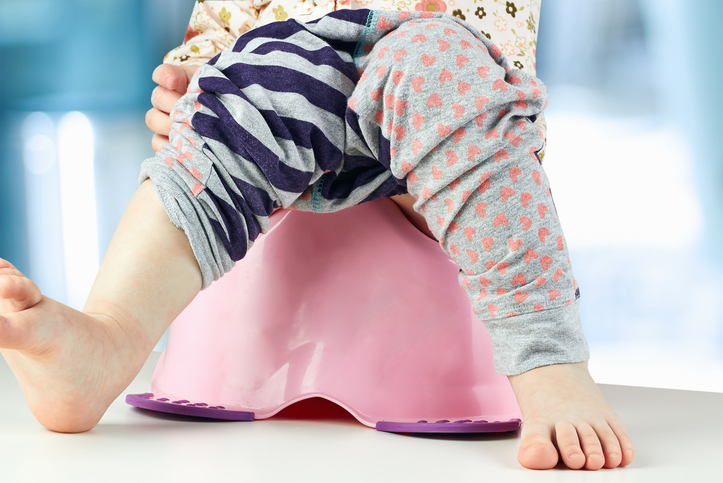
Children are constipated and it’s becoming a growing issue. Paediatric constipation makes up 25% of the referrals to gastroenterologists and most commonly, doctors are recommending over-the-counter laxatives for children to deal with what is largely a mechanical issue. This means that kids are being given a bandaid solution to something that most often has a very clear root cause. And so the question lingers: are laxatives safe for children? And if they’re not, what are the short and long term consequences?
‘Everyone poops!’ according to a popular children’s book. But do they? If we look at the adult population, we know that nearly 20% of the North American population is constipated and we spend a whopping 800 million dollars on laxatives per year. The question is, when did this start? Children are not immune to constipation – up to 8% of American children are constipated and up to 36% in developing countries. It’s in the top 10 complaints paediatricians see in their offices. Financially, the health services (doctors, emergency visits, specialists, etc.) to address children’s constipation is close to $4 billion every year.
The biggest challenge of all? Very few of the treatments, laxatives included, are addressing the root cause.
Causes of Pediatric Constipation
There is definitely some overlap with adult causes, but children have their unique reasons for constipation. Note that 95% of childhood constipation is functional – that means it doesn’t have physiological cause, like a particular condition, disease or abnormality. Some of the reasons kids get constipated are:
- Food Intolerances or allergies. These can be a cause of pediatric constipation. This is a big one and too often ignored as it can be deemed challenging to test or adhere to. However, consider what you would do as a parent if your child had a nut allergy. Constipation may not be life threatening, but it absolutely impacts the quality of life of your child. Children with gluten-sensitivity can have similar symptoms as children with celiac disease (which is very difficult to fully diagnose in children) and includes constipation. Cow’s milk in particular can be especially constipating for kids.
- Sugar and Refined Foods: This one is related to both not taking in enough fiber and the impact sugar and refined foods have on the microbiome of kids (and adults alike). Foods high in sugar can disrupt the microbial balance in the gut and contribute directly to both constipation or intermittent constipation and diarrhea often associated with irritable bowel syndrome.
- Not enough fibre. Fibre is essential to good poops because it gives bulk to our stool. Our intestines are a muscle, and fibre gives them a workout. If children’s diets are erratic or if they are picky eaters, it can be tough to get them to eat enough fruits, vegetables, beans, nuts, seeds and other fibrous foods that will help them poop.
- Not enough water. Water helps us to soak up the fibre we’re eating and shuttles poop through our bowels and out the back door. Usually, if we’re dehydrated, we won’t poop properly or have hard, dry poops that are hard to pass.
- Not enough exercise. Children can spend a lot of time being sedentary, just like adults. Between sitting at school and spending time in front of screens, children may not get enough fresh air and exercise to pump the poop through the bowels.
- Holding it in. You’ve probably been around a child who is dancing around, clearly needing to pee, but refusing to go. Sometimes, children resist the urges to poop. It may be because they don’t want to stop the activity they are doing (playing a game, watching a show, etc.), or they have some kind of fear about going to the bathroom (see the next point).
- Stress or fears about going to the bathroom. Bathroom fears may seem irrational to us as adults, but for children they are very real. Perhaps they always feel rushed when they have to go, maybe they experience cramps or pain when pooping and that’s scary to them, or maybe they don’t like public or school bathrooms. Children who had a harder time with toilet training are also more likely to be constipated.
- Stress and anxiety in general. There is a deep connection between the gut and the brain, called the enteric nervous system. When we are stressed out, our minds impact our bowels and vice versa. If a child is worried or anxious, they may have trouble going to the bathroom.
What You Need To Know About Laxatives For Children
It is not easy to watch a child suffer and so many parents turn to paediatric laxatives to help bring their children symptomatic relief.
Common Laxative Options
Note: brand names may vary depending on where you live.
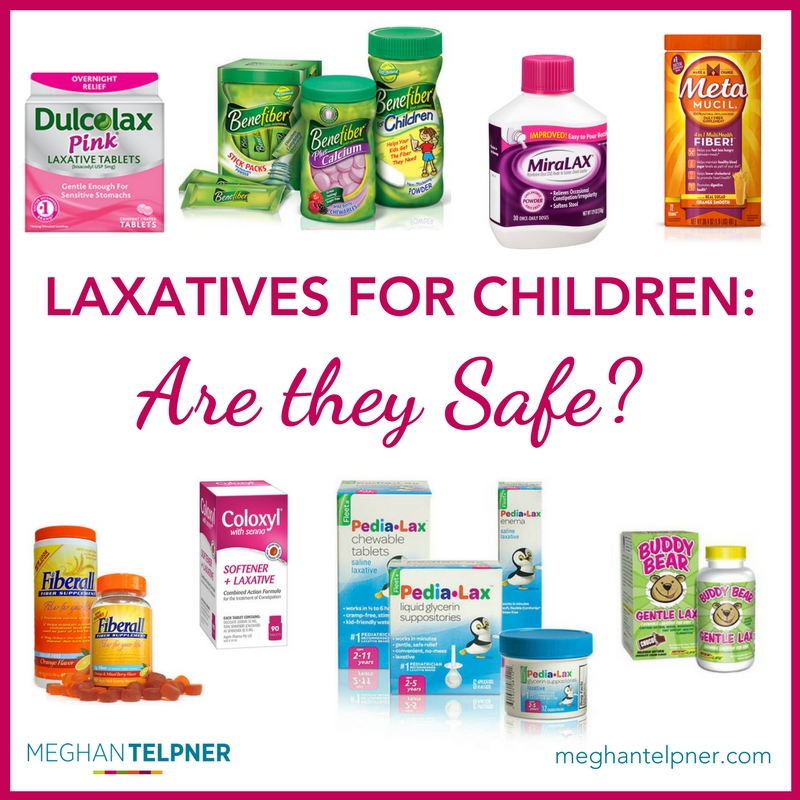
Stool Softeners or Osmotics
What They Do: These help attract water to the stool so it can pass more easily.
Short Term Side Effects: Includes nausea, vomiting, cramps, diarrhea and dehydration.
Common Osmotic Laxatives
Polyethylene Glycol
Brand Names: MiraLAX, Dulcolax Balance, GoLytely, MiraLax, Glycolax, GoEvac, CoLav, CoLyte, GaviLyte-C, GaviLyte-G, GaviLyte-N, NuLYTELY, polyethylene glycol electrolyte soln, polyethylene glycol powder, TriLyte
Risk of Use: This product isn’t recommended for children under 2 years and older children cannot take it for more than 2 weeks. Long-term risks include ulcers, dehydration and electrolyte imbalances, and potential renal toxicity.
Magnesium Hydroxide
Brand Names: Milk of Magnesia, Fleet Pedia-Lax
Risk of Use: Safety has not been established for children under 2. Short term risks include cramping, diarrhea, electrolyte imbalance and muscle weakness.
Lactulose
Brand Names: Enulose, Kristalose, Constulose, Generlac
Risk of Use: Electrolyte imbalance, blood sugar imbalance
Magnesium Citrate
Brand names: Citroma
Risks of Use: Safety isn’t established in children under 2. Should only be used occasionally for constipation.
Sorbitol
Brand Names: Sorbitol
Risks of Use: Electrolyte imbalance and dehydration.
Lubricants
What They Do: These are often oils, like mineral oil, that help to ‘grease’ the stool so it can pass.
Short Term Effects: Cramps, nausea, vomiting, incontinence, poor absorption (especially of fat-soluble vitamins), rectal discharge.
Mineral Oil
Brand Name: Kondremul Plain
Risks of Use: Mineral oil is a byproduct of the petroleum industry and it can boost our cancer risk.
Stimulants
What They Do: These work quickly and target the intestinal muscles so they will immediately get the poop going.
Short Term Effects: These can be quite harsh in some cases, and can cause bloating, nausea, diarrhea, abdominal discomfort, diaper rash and blisters.
Common Stimulant Laxatives
Senna
Brand Names: Senokot, ExLax Regular Strength, Lax Pills, Little Tummys Stimulant Laxative Drops, Senexon, SennaGen, Senna Smooth, ExLax Maximum Strength, SenokotXTRA
Risks of Use: Finger clubbing (when the shape of your fingers change). This one is not recommended for children under 2 and can be potentially toxic to children under six if they have up to 15mg.
Bisacodyl
Brand Names: Dulcolax, Correctol, BisacEvac, Bisacolax, Codulax, Alophen, Feen A Mint, Fleet Stimulant Laxative, Laxit, Modane
Risks of Use: Because this one must be taken as a tablet, it’s not recommended for children under six. Risks include rectal bleeding, bowel obstruction and laxative dependence.
Bulking Agents
What They Do: These are essentially fibre supplements to help provide bulk to stool.
Short Term Effects: Can include gas, bloating and constipation
Psyllium
Brand Names: Metamucil, Fiberall, Perdiem Fiber
Risks of Use: Psyllium in and of itself isn’t a dangerous ingredient. Unfortunately, it’s all of the additional unnecessary things like artificial colours, preservatives and loads of sugar that can be harmful. You can read up fully on the safety of Metamucil here.
The Non-Active Ingredients In Laxatives
“Non-active” or “non-medicinal” ingredients on labels are the components that don’t have the primary action, but are usually used to bind, colour, flavour or add shelf-life to a product. Laxatives for children can be in chewable tablets or liquid form, and laxative manufacturers end up adding artificial colours and flavours to make them taste better.
Some common “Non-Active” or Non-Medicinal Ingredients Include:
- Colloidal silicon dioxide: This is a suspected human carcinogen and may cause kidney stones.
- FD & C red #40 aluminum lake (or other artificial flavour): In addition to its carcinogenic properties and the risk of hypersensitivity reactions, Red 40 can also be contaminated with further carcinogens. Other animal studies have linked Red 40 to physical and developmental toxicity and DNA damage.
- Flavor: There isn’t much difference between natural and artificial flavours. Both typically start out as a real food and through many lab experiments and processes end up as a concentrated flavour agent. These flavor agents have been shown to adversely effect our body’s detoxification pathways and have been associated with an increased risk in brain tumour development.
- Magnesium stearate: This may have the potential to cause allergic reactions. It can also be derived from palm oil, an oil that has led to habitat damage and environmental degredation.
- Maltodextrin: This ingredient is derived from wheat or corn and unless otherwise specified, the maltodextrin is likely coming from GMO corn with all the associated health risks. Several studies have linked maltodextrin consumption to the suppression of “good bacteria” in the digestive system increasing risk of gastro symptoms and intestinal inflammation.
- Mannitol: A sugar alcohol that can cause dizziness, headaches, nausea, vomiting, and fluid imbalances.
- Sorbitol: As mentioned earlier, this sugar alcohol can lead to electrolyte imbalances, dehydration, bloating, stomach cramps and diarrhea.
- Stearic acid: This is a fatty acid that is often derived from palm oil or cottonseed oil, which is a highly processed industrial oil that is usually riddled with pesticides (not to mention it’s also genetically modified.)
- Sucralose: This is an artificial sweetener with a host of risks like tumours, digestive issues (including altering the microbiome), diabetes, obesity, neurological symptoms, and many more.
Essentially what we’ve got here are artificial colours, flavours, additives and bunch of sweeteners. And do we really need to be giving our children more sugar?
The problem with children’s laxatives is when constipation becomes a chronic problem, they become dependent on them. So you’re constantly giving them these additional harmful ingredients on a daily basis, while also increasing their dependence on using laxatives to poop.
As well, with older children, like pre-teens and teens, laxative abuse can become a harmful weight loss method.
How Can We Help Our Constipated Children Poop?
We want our children to have a lifetime of healthy pooping and there are a number of physical and emotional ways we can support them in this!
Boost whole, plant-based food intake
We know that plant-based foods like veggies, fruits, nuts, seeds, beans and legumes are rich sources of fibre, as well as vitamins and minerals that are essential to children’s health. Feed your kids both raw and cooked vegetables for variety, and get them involved as much as you can in the cooking process. Take them with you to the grocery store and let them pick out fruits and vegetables, and get them involved in the kitchen (using age-appropriate tools).
More tips and recipe inspiration here:
- 25 Kid-Friendly Food Blogs
- 20 Gluten-Free Kid-Friendly Snacks
- 25 Nut-Free Lunch Ideas
- How to Pack a Healthy Lunchbox
Eliminate common allergens
Evidence indicates that this can help with children’s constipation. I recommend eliminating gluten and dairy for sure as a starting point. You can then expand to try eliminating eggs, soy, nuts, peanuts and fish/shellfish. Experiment to see what works and what doesn’t.
Experiment with high-fibre FOODS
Vegetables are the top option. You can also add bulking foods like chia and flax, which also have mucilaginous properties that are beneficial to the digestive tract. Psyllium works best when taken on its own for constipation, while chia and flax can be adding to a number of delicious recipes like chia pudding or smoothies.
Boost fluid consumption
Aim to get your children drinking more liquids. Water is a top choice, or herbal teas if they are into them. You can also go for smoothies, green juice, vegetable broth or bone broth, nut milk or coconut milk. Remember that fruits and vegetables also have a high water intake so that counts too.
Give them time in the bathroom
Our lives are very scheduled, and often that extends to our children’s lives. It’s important to give children the time and space to go to the bathroom, which encourages them to fully relax and have a bowel movement. Younger kids might appreciate you being there, reading them a book or playing some music or singing songs.
Begin creating bowel habits by allowing your child 5-10 minutes in the bathroom, even if that means getting up a little earlier. If it seems impossible during the week, start off on the weekends and then transition to schooldays.
Decipher any bathrooms fears and address them
As I mentioned earlier, kids may be afraid of pooping for a particular reason. Suss out what that reason is and then determine the best solution. If necessary, recruit family members, teachers or medical professionals to help.
Try probiotics
Probiotics are important to digestion, immunity and brain health. They are beneficial to adult constipation, reducing transit time and improving stool consistency and frequency. In kids, probiotics can improve chronic constipation symptoms and can reduce abdominal pain. I recommend working with your favourite natural health care practitioner for the best dosages.
Alternatively, you can try adding fermented foods into your child’s diet for probiotic benefit.
Abdominal massage
Massaging the belly can help improve constipation and quality of life. You can do this for young children by massaging in circular motions, starting at the right hand side (where the colon begins) and then moving to the left, down, and to the right again. Older children may want to try this themselves.
Get a squatty potty
The toilet is actually not the best invention when it comes to gut health. For thousands of years, we squatted – this helps to support our colon muscles and boost elimination. There are kid-sized squatty potties that will help them get into a good ‘pooping position.’
Talk about pooping openly
There is a lot of secrecy and shame about pooping in our society. If kids are scared to talk about it, they may also be intimidated about actually doing it. Try to avoid making negative comments about bowel movements, whether yours or your child’s. Talk about pooping – be open and proud!
Your Next Step
It can be challenging to determine what the cause is for your child. Unfortunately, too often your paediatrician may not have the time to troubleshoot with you and can jump to recommending laxatives and then after a time, recommend a scope. This can have an even further detrimental effect, and contribute to an increase in stressful associations for your child. Given that the majority of constipation issues in children are functional, it may simply be a matter of trial and error to determine what the main contributing factors are. This is absolutely worth pursuing and managing as early as possible, to help ensure healthy, natural bathroom habits as your child grows.
If you have any tips that have worked for your kids, please share in the comments!
Free Resource Library
Enjoy more than 40 downloadable guides, recipes, and resources.















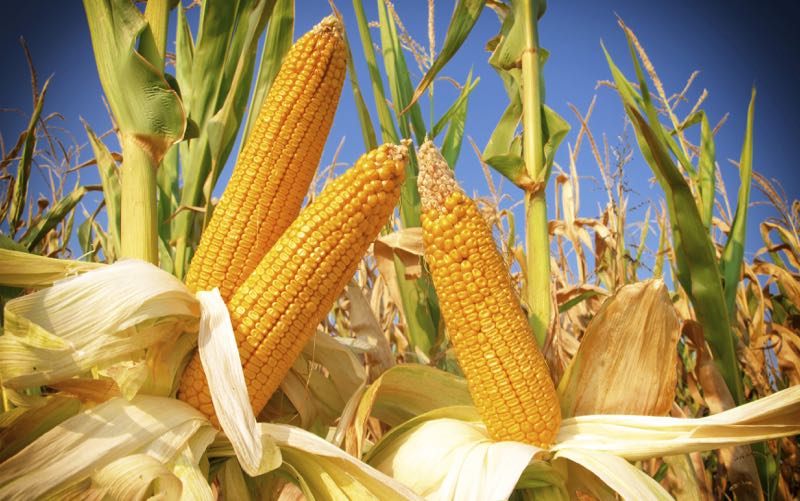


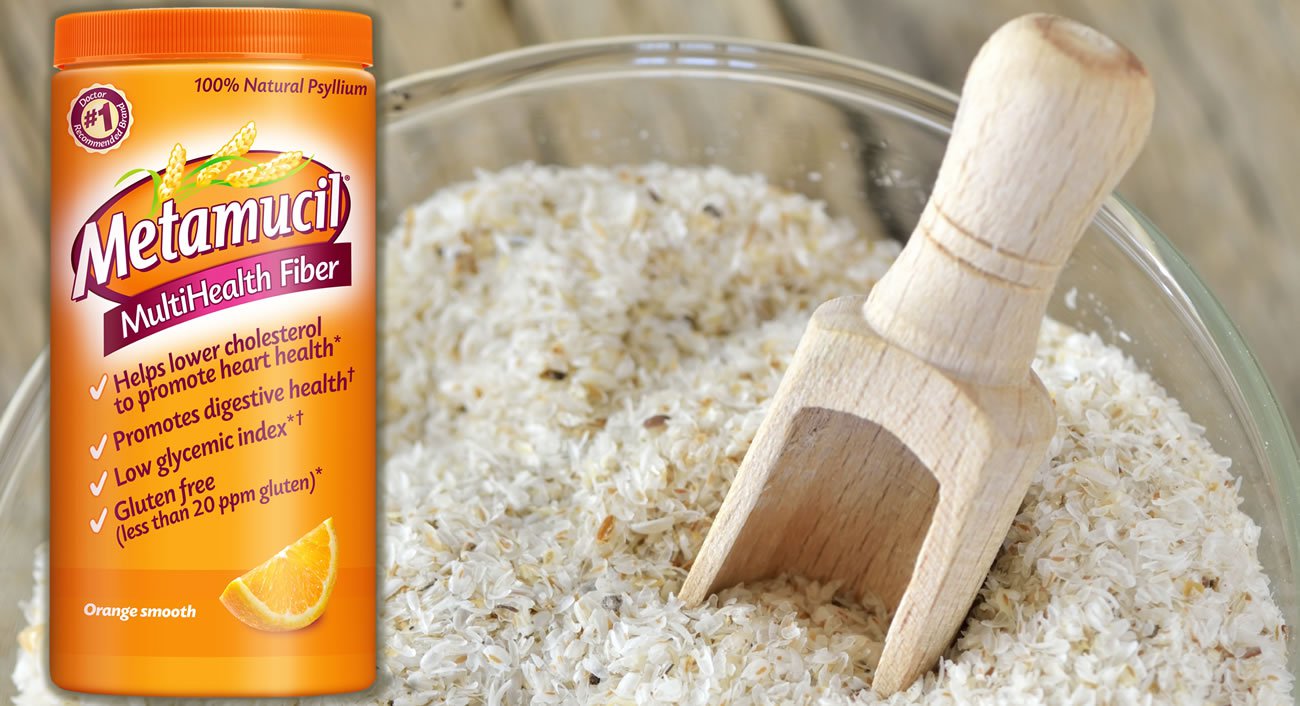


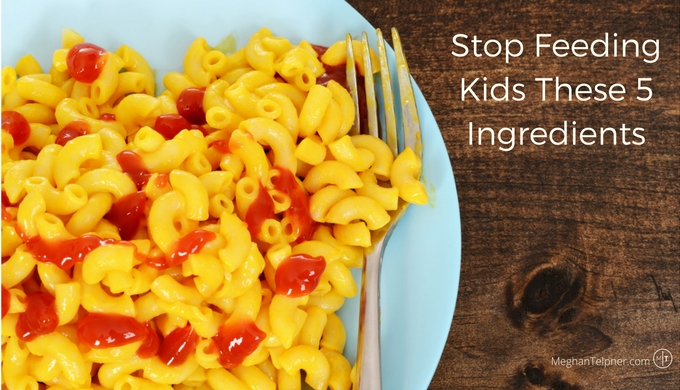

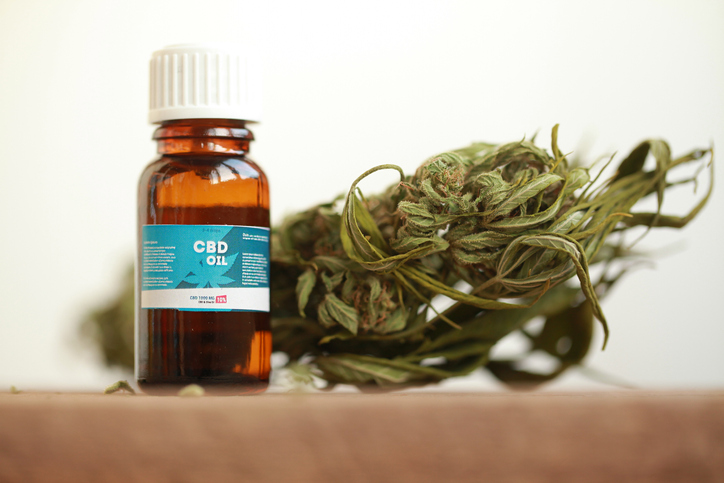
Hello,
Regarding children not being able to poop properly, well, my daughter is raising her daughter as a Vegan and gives the child Flaxseed Oil as part of her regular diet.
The child is 4 years old and I can’t recall her having any problems pooping. I think that even if your a child is not Vegan, flax seed oil might help without any side effects.